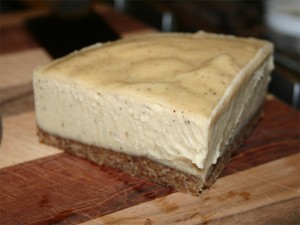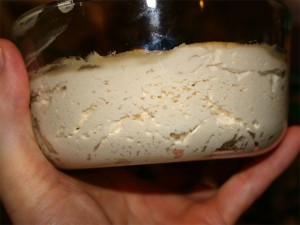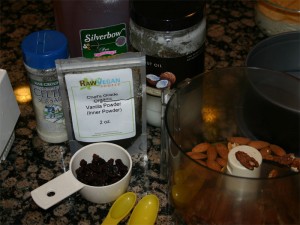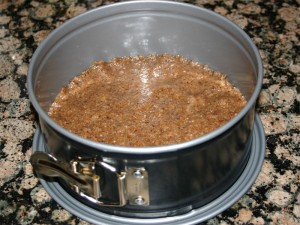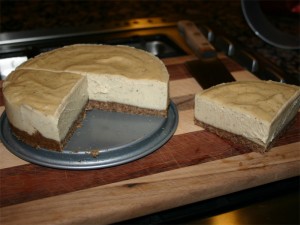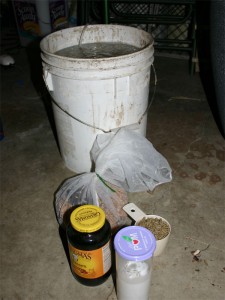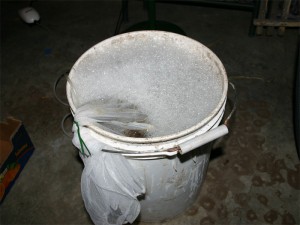I absolutely love being able to remember my dreams when I wake up in the morning. Of all the crazy things to wake up with, this morning I remember that in my dream I was being told that (basically) – everyone knows that the Philosopher’s Stone is made from Melatonin and Serotonin. I was impressed that Melatonin creates the gold vibration and Serotonin creates the silver vibration.
Can you believe it? Of all the things to wake up impressed to blog about – Melatonin and Serotonin!
Being the curious person that I am, I quickly dug up some information on both.
Melatonin (pronounced /ˌmɛləˈtoʊnɪn/ ( listen)), also known chemically as N-acetyl-5-methoxytryptamine,[1] is a naturally occurring compound found in animals, plants, and microbes.[2][3]
…
Many biological effects of melatonin are produced through activation of melatonin receptors,[5] while others are due to its role as a pervasive and powerful antioxidant,[6] with a particular role in the protection of nuclear and mitochondrial DNA.[7]
In mammals, melatonin is secreted into the blood by the pineal gland in the brain. Known as the “hormone of darkness”, it is secreted in darkness in both day-active (diurnal) and night-active (nocturnal) animals.[8]
Melatonin has been the furthest thought from my mind, but it is very interesting that it is linked to the Pineal gland. Anyone that as researched the pineal gland knows that it’s linked to spirit. From Wikipedia:
The pineal gland (also called the pineal body, epiphysis cerebri, epiphysis or the “third eye“) is a small endocrine gland in the vertebrate brain. It produces the serotonin derivative melatonin, a hormone that affects the modulation of wake/sleep patterns and seasonal functions.[1][2] Its shape resembles a tiny pine cone (hence its name), and it is located near the centre of the brain, between the two hemispheres, tucked in a groove where the two rounded thalamic bodies join.
I searched for “Pineal gland soul” and found this little write up from StrayReality.com really quickly:
While the physiological function of the pineal gland, has been unknown until
recent times, mystical traditions and esoteric schools, have long known, this area
in the middle of the brain, to be the connecting link… between the physical and
spiritual worlds.
So here we have a light activated gland in the body that produces a molecule during the night that is linked to dreaming and the producing the molecule of my dream. Ha!
As a side note, here is a little bit regarding what happens to the pineal over time with a typical person. From Wikipedia:
The human pineal gland grows in size until about 1–2 years of age, remaining stable thereafter,[16][17] although its weight increases gradually from puberty onwards.[18][19] The abundant melatonin levels in children are believed to inhibit sexual development, and pineal tumors have been linked with precocious puberty. When puberty arrives, melatonin production is reduced. Calcification of the pineal gland is typical in adults.
The key part that I wanted to point out here is that if you’re a typical person, your pineal gland will most likely fall victim to calcification. In my experience, ORMUS will break down the calcification enabling dream functionality and, most likely, Melatonin production. At least, it enhances dreaming which I would link to a healthy functioning Pineal gland.
Back on track here with ‘the hormone of darkness’.

Production of melatonin by the pineal gland is inhibited by light and permitted by darkness. For this reason melatonin has been called “the hormone of darkness”. Its onset each evening is called the Dim-Light Melatonin Onset (DLMO). Secretion of melatonin as well as its level in the blood, peaks in the middle of the night, and gradually falls during the second half of the night, with normal variations in timing according to an individual’s chronotype.[36]
…
Besides its function as synchronizer of the biological clock, melatonin also exerts a powerful antioxidant activity. The discovery of melatonin as an antioxidant was made in 1993.[20] In many less complex life forms, this is its only known function.[40] Melatonin is an antioxidant that can easily cross cell membranes and the blood-brain barrier.[6] Melatonin is a direct scavenger of OH, O2−, and NO.[41] Unlike other antioxidants, melatonin does not undergo redox cycling, the ability of a molecule to undergo reduction and oxidation repeatedly. Redox cycling may allow other antioxidants (such as vitamin C) to act as pro-oxidants, counterintuitively promoting free radical formation. Melatonin, on the other hand, once oxidized, cannot be reduced to its former state because it forms several stable end-products upon reacting with free radicals. Therefore, it has been referred to as a terminal (or suicidal) antioxidant.[42]
So, as it turns out, Melatonin is produced by the Pineal gland in highest concentrations while we sleep and functions as an antioxidant which can react only once. Let’s remember this and follow a link to Melatonin Receptor Agonists.
Activation of the receptor can lead to ion flux inside the cell.[1][4]
…
Melatonin is involved in regulating immune responses in both human and animals through activation of both MT1 and MT2 receptors.[2][4] MT1 and MT2 receptors are widespread in the eye and are involved in regulating aqueous humor secretion, which is important for glaucoma, and in phototransduction.
Digging deeper, we follow the link to Phototransduction and find:
Visual phototransduction is a process by which light is converted into electrical signals in the rod cells, cone cells and photosensitive ganglion cells of the retina of the eye.
Leaping to photosensitive ganglion cells:
Compared to the rods and cones, the ipRGC respond more sluggishly and signal the presence of light over the long term.[2] They represent a small subset (~1-3%) of the retinal ganglion cells. Their functional roles are non-image-forming and fundamentally different from those of pattern vision; they provide a stable representation of ambient light intensity. They have at least three primary functions.
- They contribute to photic regulation of, and acute photic suppression of, release of the hormone melatonin from the pineal gland.
Once again, we’re linked back to the Pineal gland. The interesting part is that the Melatonin seems to help with the electrical functioning of specialized nerve cells that link back into the brain. No wonder why people call this the ‘third eye’! It would make sense that if the Pineal gland is functioning fully (not calcified) it would be giving off its hormone (melatonin) and the OTHER light sensitive cells of the body would function to their fullest ability.
What about Serotonin? From Wikipedia:
Serotonin ( /ˌsɛrəˈtoʊnɪn/) or 5-hydroxytryptamine (5-HT) is a monoamine neurotransmitter. Biochemically derived from tryptophan, serotonin is primarily found in the gastrointestinal (GI) tract, platelets, and in the central nervous system (CNS) of animals including humans. It is a well-known contributor to feelings of well-being; therefore it is also known as a “happiness hormone” despite not being a hormone.
Approximately 80 percent of the human body’s total serotonin is located in the enterochromaffin cells in the gut, where it is used to regulate intestinal movements.[1][2] The remainder is synthesized in serotonergic neurons in the CNS where it has various functions. These include the regulation of mood, appetite, sleep, as well as muscle contraction. Serotonin also has some cognitive functions, including in memory and learning
…
Serotonin is mainly metabolized to 5-HIAA, chiefly by the liver. Metabolism involves first oxidation by monoamine oxidase ( MAO ) to the corresponding aldehyde. This is followed by oxidation by aldehyde dehydrogenase to 5-HIAA, the indole acetic acid derivative. The latter is then excreted by the kidneys.
So, we’ve got a ‘hormone of darkness’ and a ‘happiness hormone’! Turns out that this ‘happiness hormone’ is also a neurotransmitter.
Neurotransmitters are endogenous chemicals that transmit signals from a neuron to a target cell across a synapse.[1] Neurotransmitters are packaged into synaptic vesicles clustered beneath the membrane on the presynaptic side of a synapse, and are released into the synaptic cleft, where they bind to receptors in the membrane on the postsynaptic side of the synapse. Release of neurotransmitters usually follows arrival of an action potential at the synapse, but may also follow graded electrical potentials. Low level “baseline” release also occurs without electrical stimulation. Neurotransmitters are synthesized from plentiful and simple precursors, such as amino acids, which are readily available from the diet and which require only a small number of biosynthetic steps to convert.[2]
In other words, without Serotonin, the functioning between our nerve cells would not function very well. I’m sure they’d function to some degree, but to function well, there must be Serotonin.

Notice the similarities between this molecule and Melatonin above. They have the same base carbon structure with slightly different endpoints.
Thus, what we should see here is that both Melatonin and Serotonin are molecules that enhance human sensitivities. The Serotonin molecules act specifically on the nerve cells so impulses can travel to the brain and Melatonin acts to enhance photo sensitivities which also carry information to the brain.
Do you remember that in the post The Art of Seeing – can you see auras? I talked a bit about seeing, but had no idea that Melatonin might have a part in it!
By now I’m sure you’re asking, what the heck does this have to do with The Philosopher’s Stone?
To make this connection, you’ll want to read through The Book of Aquarius. You can find a copy here or simply Google the title and I’m sure the first hit will give you the location where you can download the PDF file for free (or view the HTML).
In that write up regarding making The Stone, the author talks about distilling urine. The reason is that it has ‘life-energy’. In order to make the stone, you start with urine.
Well, if you’ve looked through the ORMUS websites enough, you’ll notice that people have distilled ORMUS from urine. Here is a link to a brief description of that process at SubtleEnergies.com. There is a comment there that reads:
If there is ORMEs present there will be large bubbles to swell up sometimes filling the entire flask before rupturing, this is your personal ORMEs with the memory and refinement that your body has already performed.
So, at this point, we know that urine can contain Melatonin, Serotonin and ORMUS. The best time to find Melatonin in the urine is just upon waking up. The author of The Book of Aquarius states:
The best urine to use is that of a dark yellow color, since this means there is less water and more body, which is useful in the First Part of the work. Therefore the best time to collect the urine to be used for making the Stone is the first time you urinate in the morning.
Yet he doesn’t make the link that the body is releasing Melatonin the first thing in the morning. I would guess that urine secreted during the day would be lower in Melatonin and higher in Serotonin. Specifically when someone is really happy or in a state of bliss – or, more specifically, the next urination after this state when the body goes to filter it out.
Lastly, and probably most importantly, is that ORMUS type minerals are present in the urine and that they are already attuned to the human vibration. The ORMUS that comes out of people already vibrates at the correct spin that’s needed for humans. Or, in other words, the high spin state that other ORMUS atoms must be spun up to is the same rates that the ORMUS that leaves the body is spinning at.
This leads to the growing phases (duplication, fermentation) that are talked about regarding The Stone. During this phase you have to ‘keep the energy flowing’ by simulating human life and add substances to the mixture that can absorb the energy. Specifically, as I’ve talked about in previous postings, when the superconductive atom is in sync with its source, energy will flow through the atom into its environment. Thus the superconductive ORMUS atoms that come out of a human are used to charge other atoms that are capable of being superconductive.
Sound simple? Lol…
Also, when I woke up this morning, I was impressed that Melatonin will produce the red stone and Serotonin will produce the white stone.
Ok. Well, I guess it’s time to get to work. I might have to do a little shopping, by hey, what else is there to do on Easter!
If you’re inspired to follow the directions outlined in The Book of Aquarius I’d love to hear about it. I believe there is truth in the authors words even though he had not finished making the stone at publish time.
Good day.






